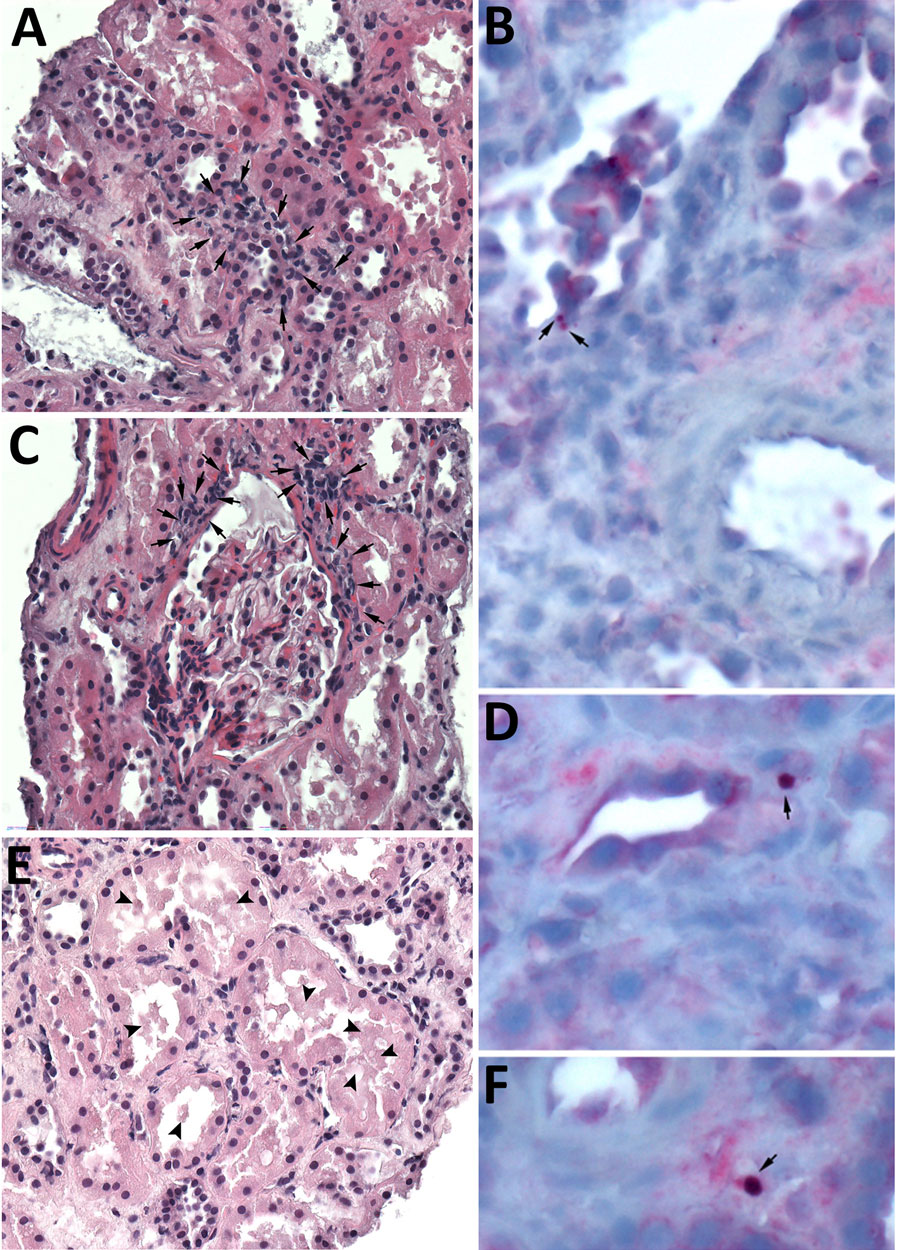Volume 31, Number 3—March 2025
Dispatch
Donor-Derived Ehrlichiosis Caused by Ehrlichia chaffeensis from Living Donor Kidney Transplant
Figure

Figure. Histopathologic and immunohistochemical staining of renal graft biopsy from donor-derived ehrlichiosis caused by Ehrlichia chaffeensis from living donor kidney transplant. We performed an immunohistochemical (IHC) assay using an immunoperoxidase technique, with naphthol fast-red substrate, light hematoxylin counterstaining, and an antibody raised against E. canis but known to cross-react with other Ehrlichia species, including E. chaffeensis and E. ewingii, among others. A) Interstitial peritubular mononuclear cell infiltrate (arrows). Hematoxylin and eosin (H&E) stain; original magnification ×400. B) Immunostaining of bacterial antigens from Ehrlichia species within 2 morulae in the cytoplasm of reactive endothelial cells of a renal venule (arrows). Original magnification ×630. C) Periglomerular focal interstitial mononuclear cell inflammation (arrows). H&E stain; original magnification ×400. D) Magnification of IHC assay of kidney biopsy indicating a granular immunostaining pattern within intracellular morulae (arrows). Original magnification ×1,000. E) Renal tubules displaying some features of acute tubular necrosis including epithelial cells with condensed chromatin and sloughing of cells into lumina. The tubular lumina are filled with sloughed-off necrotic tubular epithelial cells (arrowheads). Some tubules show near complete luminal occlusion. Casts are not identified. H&E stain; original magnification ×630. F) Another intracellular morulae seen on kidney biopsy by IHC assay (arrow). Original magnification ×1,000.
1These first authors contributed equally to this article.
2These senior authors contributed equally to this article.